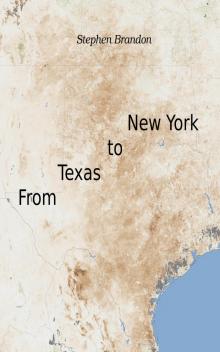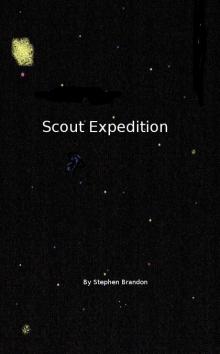- Home
- Stephen Brandon
Scout Expedition Page 2
Scout Expedition Read online
Page 2
Chapter 2: My name is James and I'm a pilot.
Habitat 1 slowed down and the navigation personnel reported that they were approximately 1 light hour out from a star system on a collision course. Obadiah ordered the solar sails immediately deployed and the ion rockets positioned to change their trajectory to the solar north of the star system. Radar reflection were lightest in that direction. The solar sail billowed and flapped like a rag in front of an air vent. They were about to reel them back in when they caught the photons from the star and snapped out into their rigid designed shape. Then the computer was engaged and the sails angled to drive them to the solar north. Slowly the angle of their trajectory changed to 1/2 a degree off direct collision. Then 1 degree. After an hour they had achieved a 4 degree northward trajectory.
Navigation informed Obadiah that they were a few light seconds from the stars Oort shell when they hit the first of the magnetic waves reflected by the stars magnetic field. The turbulence snapped one of the solar sails cables. The crew dispatched out to repair it was flung off into space. At that point Obadiah ordered the sails drawn in. The one with the snapped cable tore half way in and had to be cut free. The main pilot angled the ion drive to the main direction they were traveling in the hope that it would burn through anything that was in the direct path. Only a few ice asteroids impacted on the habitat from the Oort shell.
Navigation reported that their trajectory had no detectable planets or asteroids in their path. However, small rocky asteroids may not have shown up. All personnel were ordered back into the safe rooms except the bridge and engineering crews. They buttoned up their spacesuits and continued to work.
Sixteen hours later, and over half way through the star system a small rocky asteroid impacted the hull and penetrated. The fireball created scorched a path halfway around the inner hull before it made contact with one of the interior buildings and exploded. The shock wave generated flattened most of all the buildings on the inner hull. Engineering reported that the hull breach was only a meter diameter, but they could not approach it. However they were going to try using the building debris to put a temporary plug in the hole. After 3 tries a steel plate managed to reduce the air escaping to a point where the maintenance crew could approach. They packed placed a larger steel plate over the hole and then started excavating around its outer edge. As soon as they reached the main rocky surface they started pouring concrete to seal the plate to the rock. All but one side sealed. After digging further out from the edge of the plate they discovered a crack. Immediately the chief engineer ordered a heavy laser brought down to melt the rock. He also had his crew dig down and follow the crack. Melting the sides of the crack in several locations they followed it for over two hundred meters . When they came to the end of the crack they started melting from that point back toward the impact hole.
The chief engineer called the bridge and told them that the interior atmosphere was still causing problems. The air pressure, even though it was lower that normal, was still exerting to much pressure on the hull that more cracks were beginning to radiate out from the impact point. No provisions had ever been planned or designed for venting the atmosphere from the habitat. Obadiah ordered the only thing he could think of. Opening the main cargo airlock doors on the south end of the habitat.
The swirling atmosphere venting out the cargo airlocks acted like a rocket motor for slowing the forward speed of the habitat, but after a few minutes the ion drives quit working. It took 5 hours for all the atmosphere to vent from the habitat. Then they were able to restart the ion drives.
In the mean time the engineers started positioning materials to build airlocks over all the safe room doors.
Three hundred and sixty three perished because a fragment penetrated one of the safe rooms. It was a bloody mess.
It's taken almost two years to limp back to Iota Horologii. Our first contact was with habitat 3. They'd set up in the Oort cloud. They'd threaded the system and used the gas giants for gravitational breaking. They then admitted that they'd only beat us by four months. It was decided that the safest thing to do after a complete inspection of our habitat was to build a replacement and move to it.
The new design is great, it allows for pumping the atmosphere into holding tanks, multiple impact shields on the south end, and larger ion engines. It even has a built in grid so by applying electrical charge to it when rotating it creates a magnetic field outside the outer hull. Also the whole outer hull is made up of solar cells.
The survey of the system is complete and no signs of life or previous civilization have been found. The habitats have started spiraling in to the inner system asteroid belts. The plan is to set up between the two.
It's taken 17 months to set up our orbit. The council claims that the first keel section will be ready within a year. Two habitats will be constructed side by side.
* * *

 5 Short Stories
5 Short Stories My Mine
My Mine Just My Opinion Some Old and New Ideas
Just My Opinion Some Old and New Ideas From Texas to New York
From Texas to New York Survival Family
Survival Family Fairy Punishment
Fairy Punishment The Plan and other short stories
The Plan and other short stories The Asteroid Belt
The Asteroid Belt Escape
Escape Nightmares
Nightmares Scout Expedition
Scout Expedition